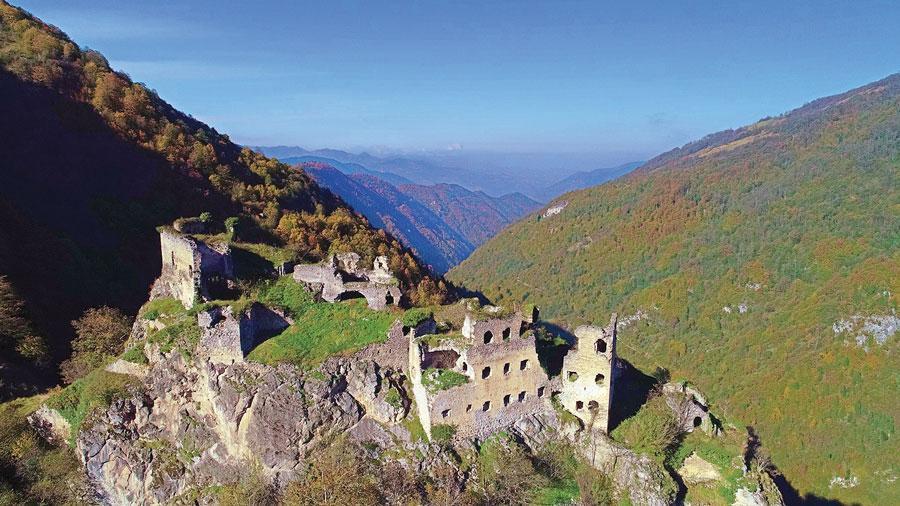Mountaintop Trabzon monastery set to become more accessible for visitors
TRABZON

The Kuştul Monastery has been clinging to pillars of sheer rock overlooking a valley in the Black Sea province of Trabzon’s picturesque Maçka district for many centuries. Worshippers, throughout the centuries, seemingly had to trek a difficult route to get to the monastery. But now abandoned and nonfunctioning, authorities in Trabzon want to open Kuştul to tourists and history aficionados, who cannot access the monastery unless it is made accessible.
The monastery is believed to have been built mid-8th century. Sitting on a mountaintop, it is also believed to have undergone additions and restorations throughout its history. What remains from the centuries-old monastery is its main body and collapsed walls.

The monastery was registered and recognized as a monument upon the application of the Maçka Municipality to the Trabzon Regional Directorate of Conservation of Cultural Heritage.
The site of the monastery, which has many tunnels through the valley, has witnessed many historic events, including a tragic population exchange in 1923 in the wake of the downfall of the Ottoman Empire along with other empires and the birth of new nation states.
The 72-room monastery has a single entrance door that can be reached to via three pathways that have been used for many years by locals. To reach the monastery, the most common route is a 1.5-kilometer route, the shortest compared to the other ones.
For visitors, climbing to the monastery is an arduous challenge because the track is on the slope of a forested mountain, but they can see rock tombs, church ruins and a fountain in an area close to the five-story monastery, which is then reached after climbing 72 steps.
Although far from the Black Sea, the monastery’s top floor has a view of it.

Speaking to state-run Anadolu Agency, Maçka Mayor Koray Koçhan said Maçka was a settlement where people of various religions once lived together in peace.
He said historical documents and maps indicated the presence of five monasteries in Maçka, adding that the best-known ones were Sümela, Vazelon and Kuştul monasteries and works were ongoing to find the other two.
Koçhan said each of the three monasteries was located on a different valley but were all connected to each other with paths.
Kuştul Monastery first went into service in 773 CE, said Koçhan, adding that after serving for more than 400 years, it was plundered and burned down during a sectarian violence in Christianity in 1204.
He said the monastery was restored after remaining closed for some 200 years until 1393. It had regained its glorious days in the beginning of the 15th century.
With many churches around it, Kuştul Monastery was damaged by a fire in 1904 and the region was abandoned after the fire.
Koçhan said there were many holy caves, through which spring water flows, on the mountain of the monastery.
“Kuştul Monastery was handed over to the municipality for environmental arrangement and protection. Then we ordered a project to be made taking into consideration the information and visuals from various sources,” he said.
Koçhan said they would clean the monastery and its environment and make the path more accessible with the construction of safety rails.
“Without touching any original stones, we will establish safety rails in the necessary places for the safety of visitors coming to the monastery. At the bottom there is a beautiful garden with walnut trees. We will also establish the rail around it, and from here one can get down to the garden on a five-story staircase. We will protect this place for approximately a cost of between 500,000 and 1 million Turkish Liras, and open it for visit. We will be working until the June-July period,” Koçhan said.
He said they planned to start cleaning before winter, adding, “I believe that this place will be a tourist hotspot next year if we carry out a successful promotion. Nearly 15,000-20,000 tourists are expected to visit the monastery next year. The 10-year budget of our municipality is not enough to make this place like Sümela Monastery, but this is a step and I believe this place will be an important place in faith tourism as it is undergoing restoration. Maçka is a place that can be made an open-air museum to serve nine to 10 months of the year just like it does in the summer season. The most important thing is to make a start.”
















